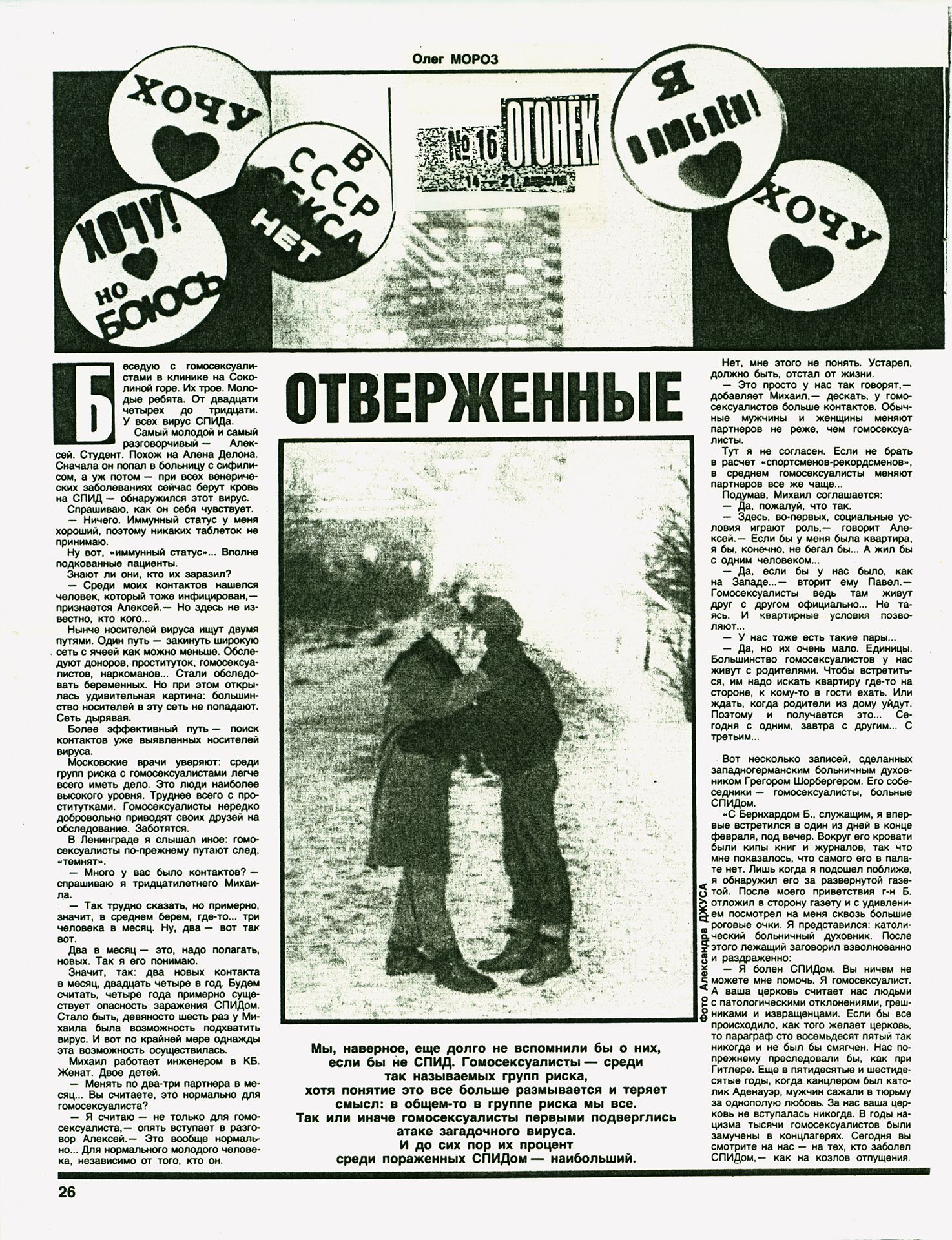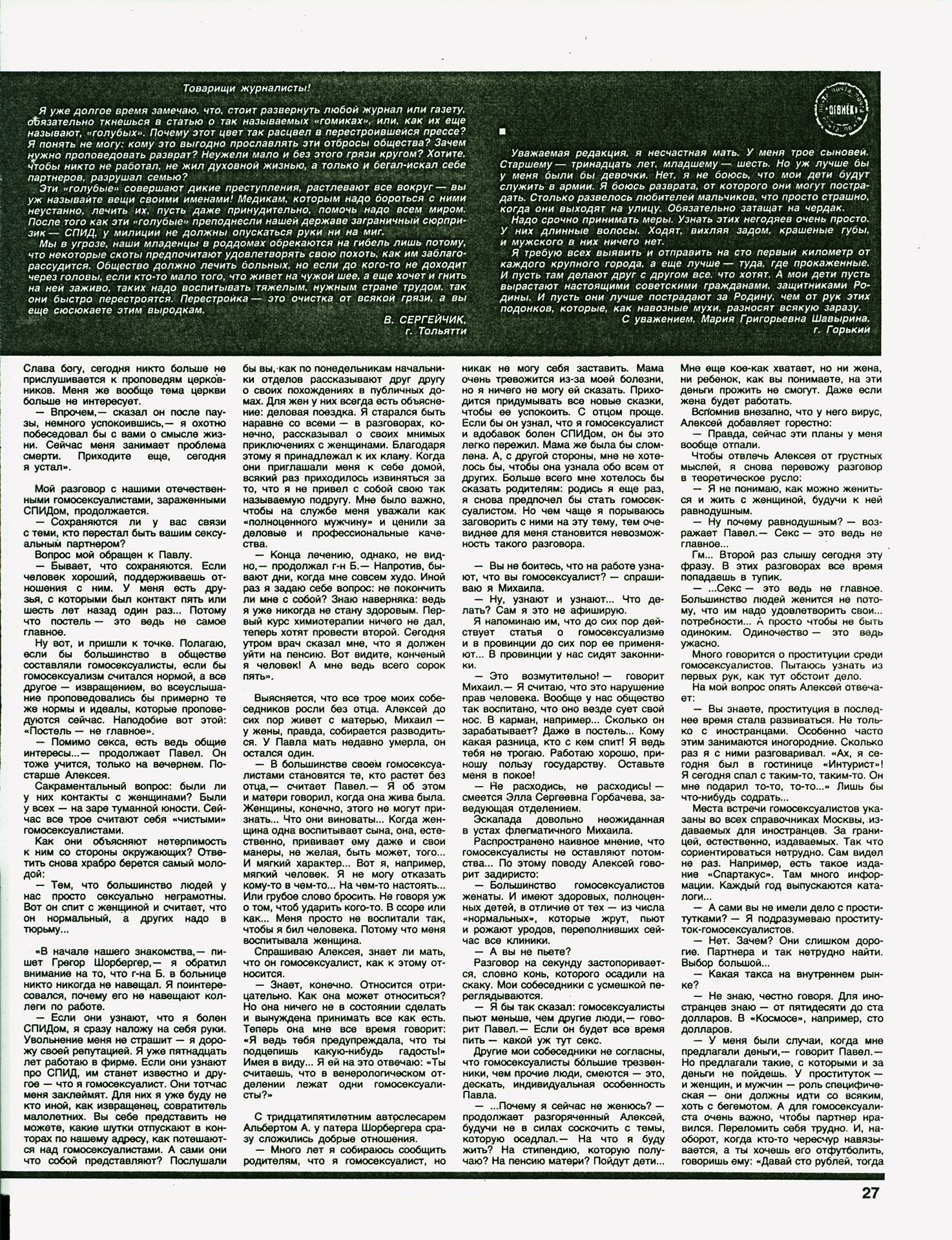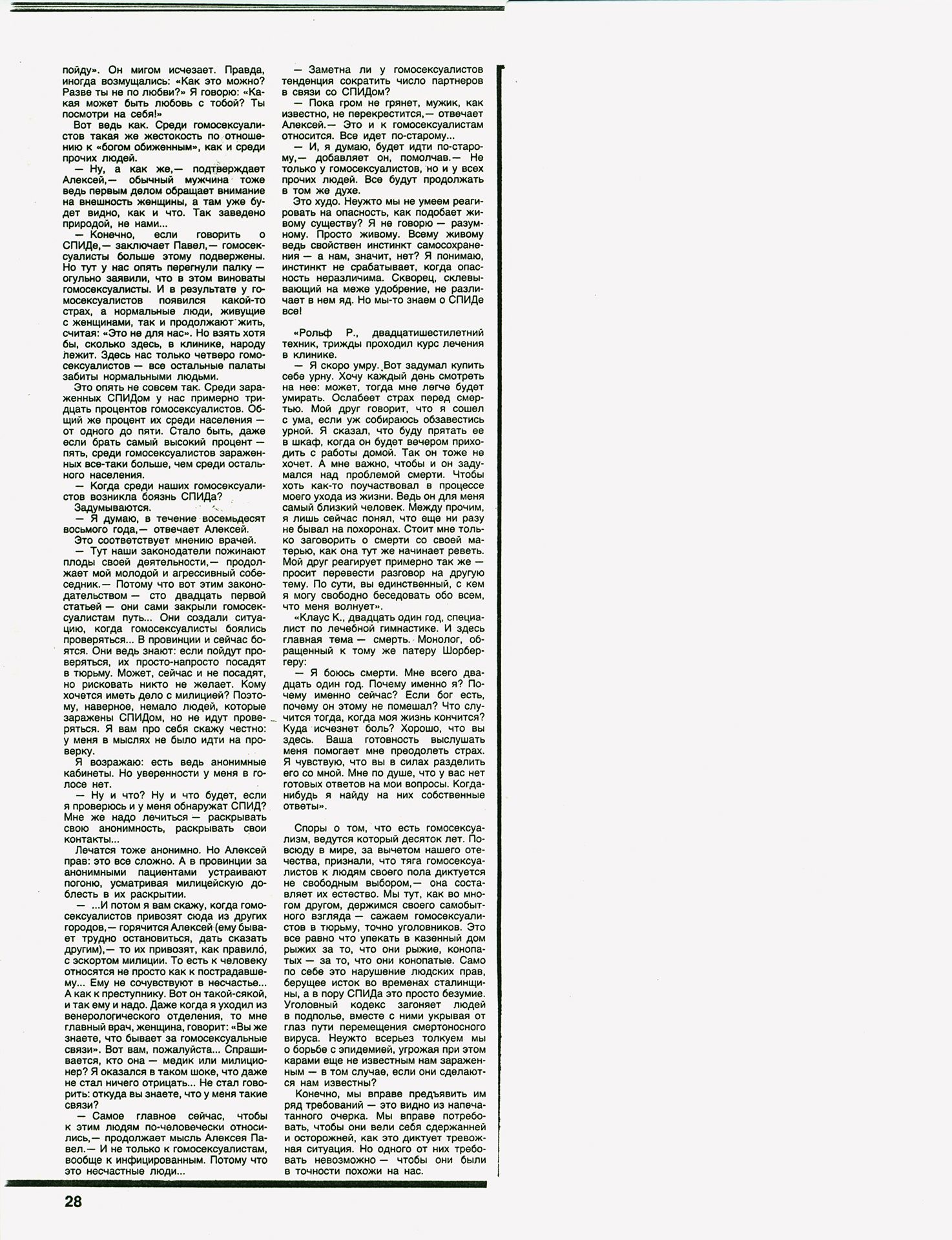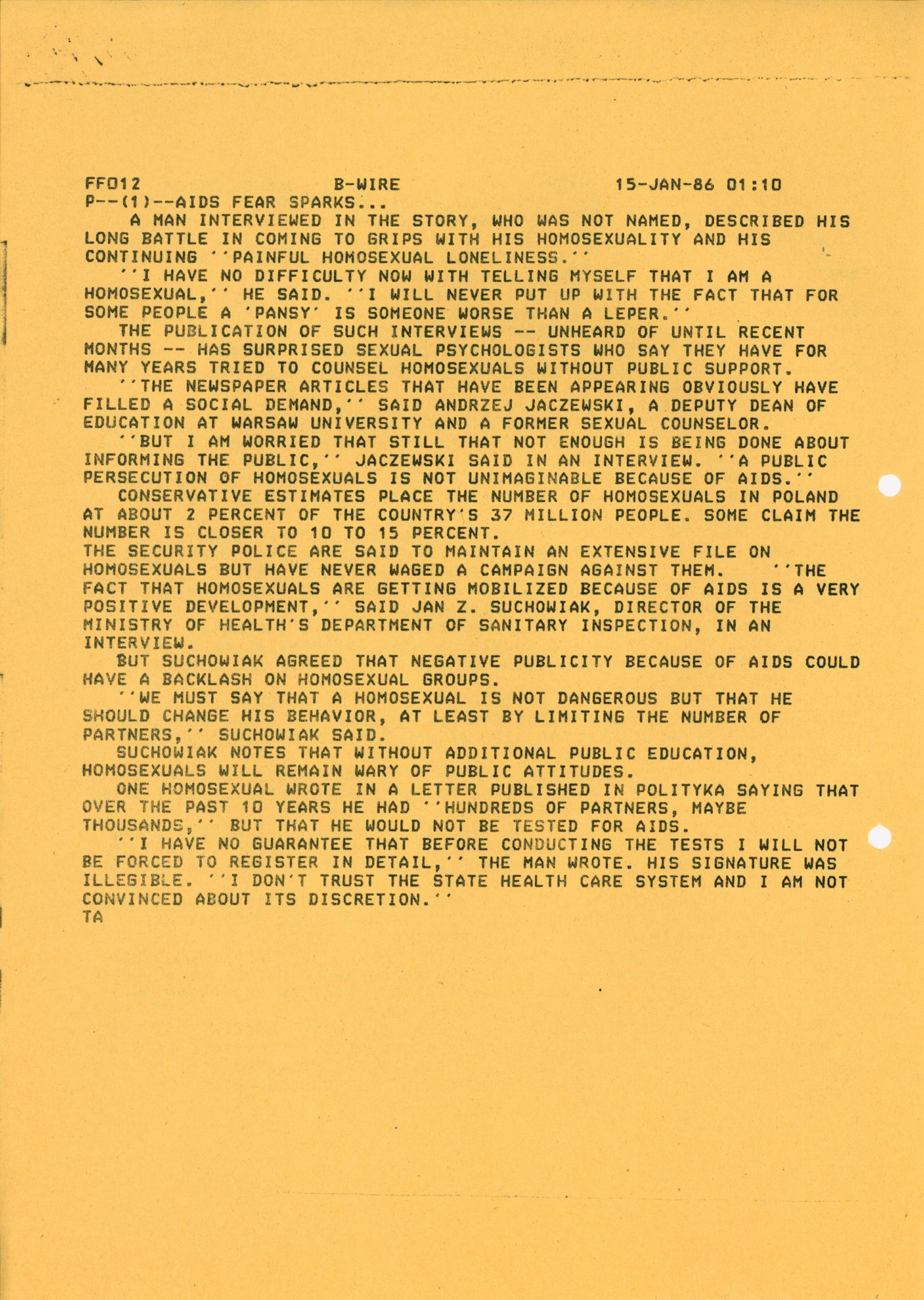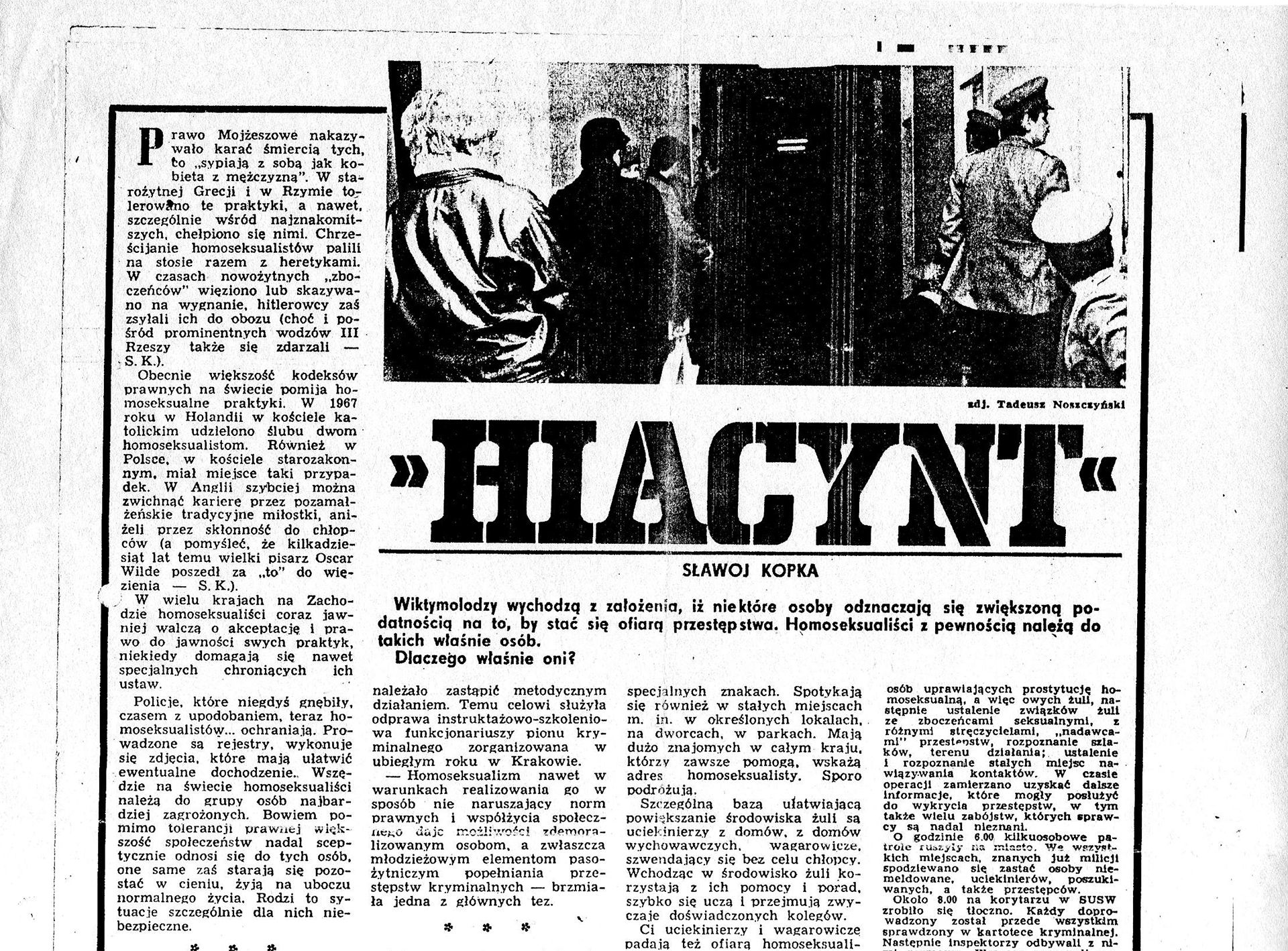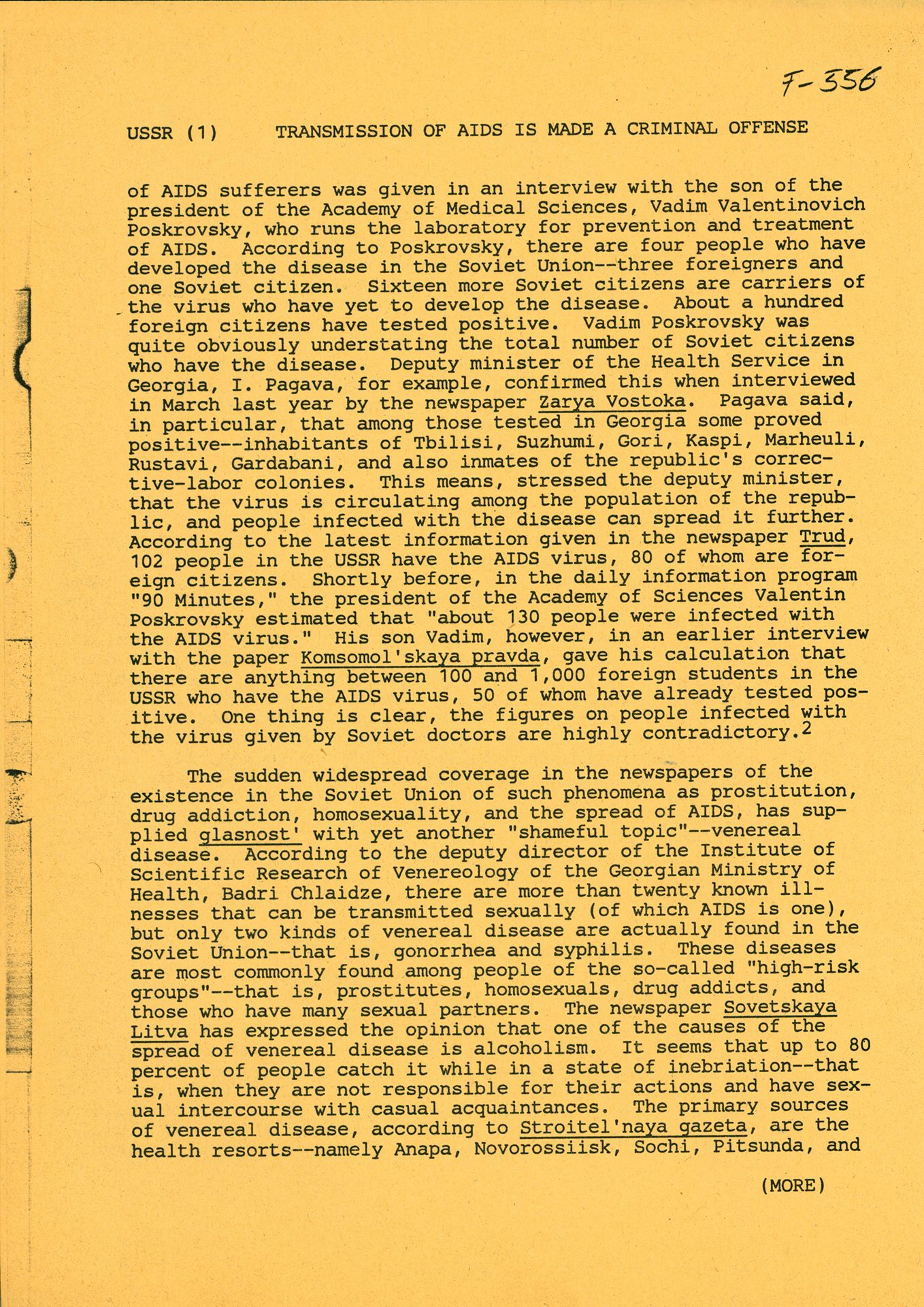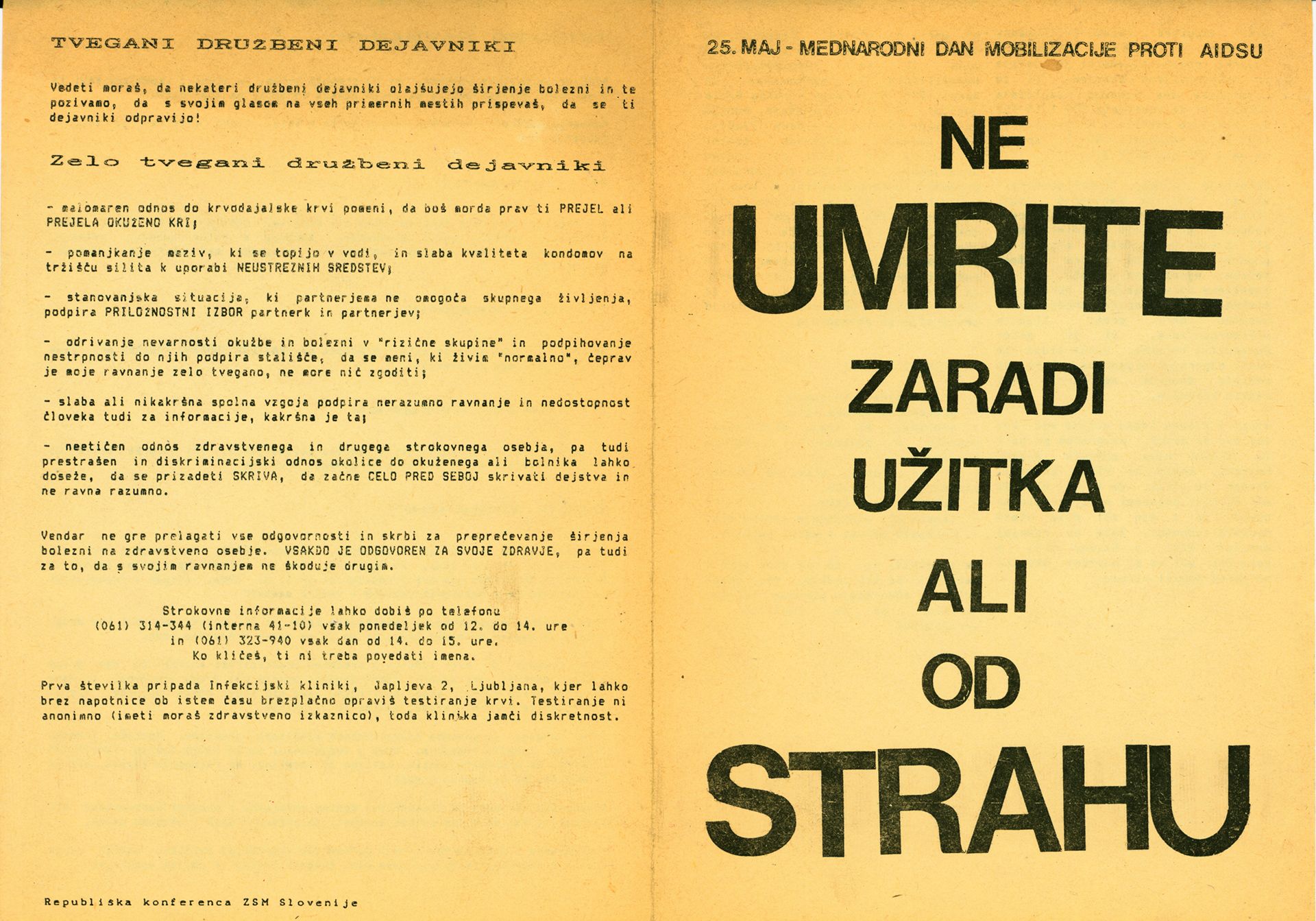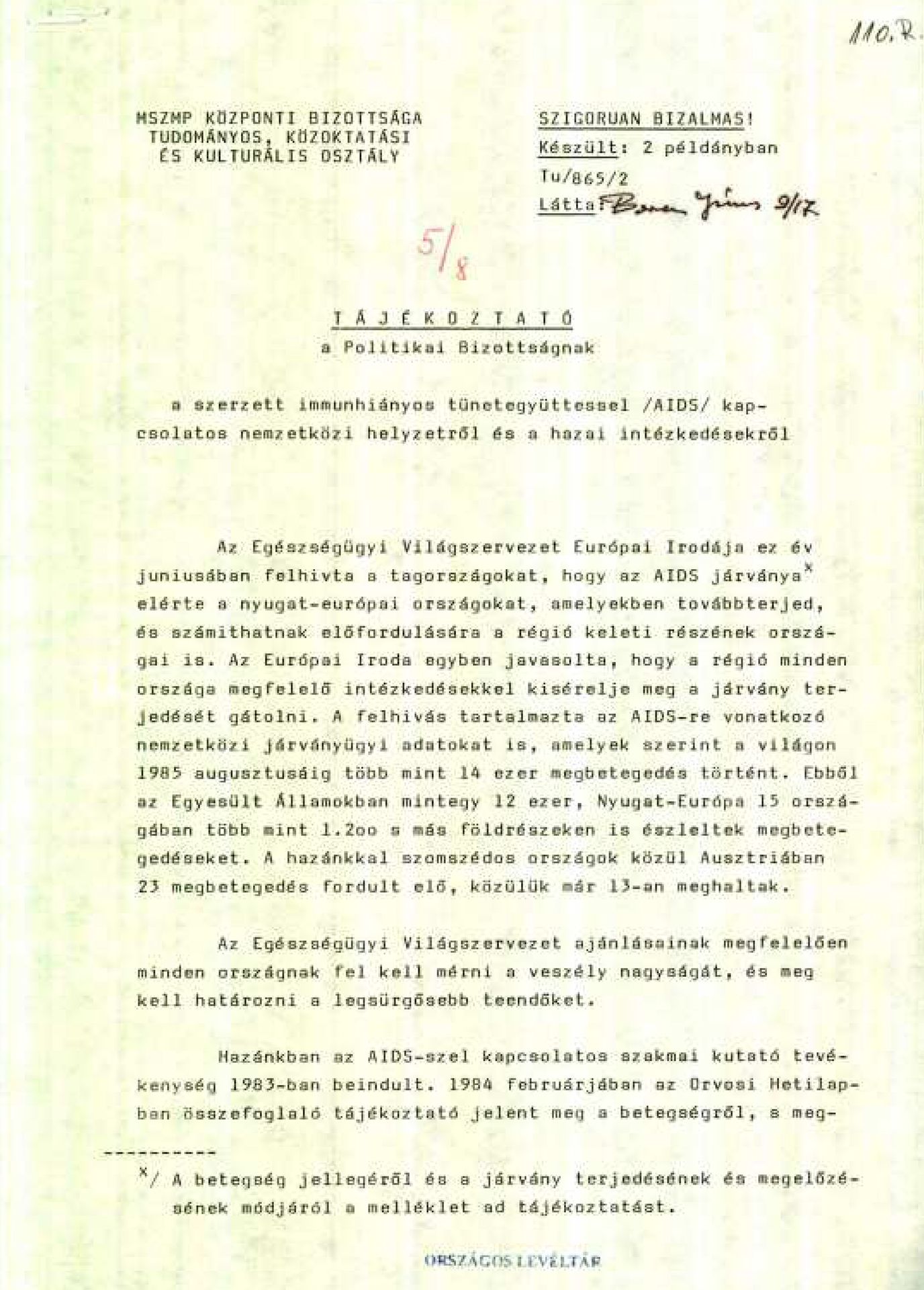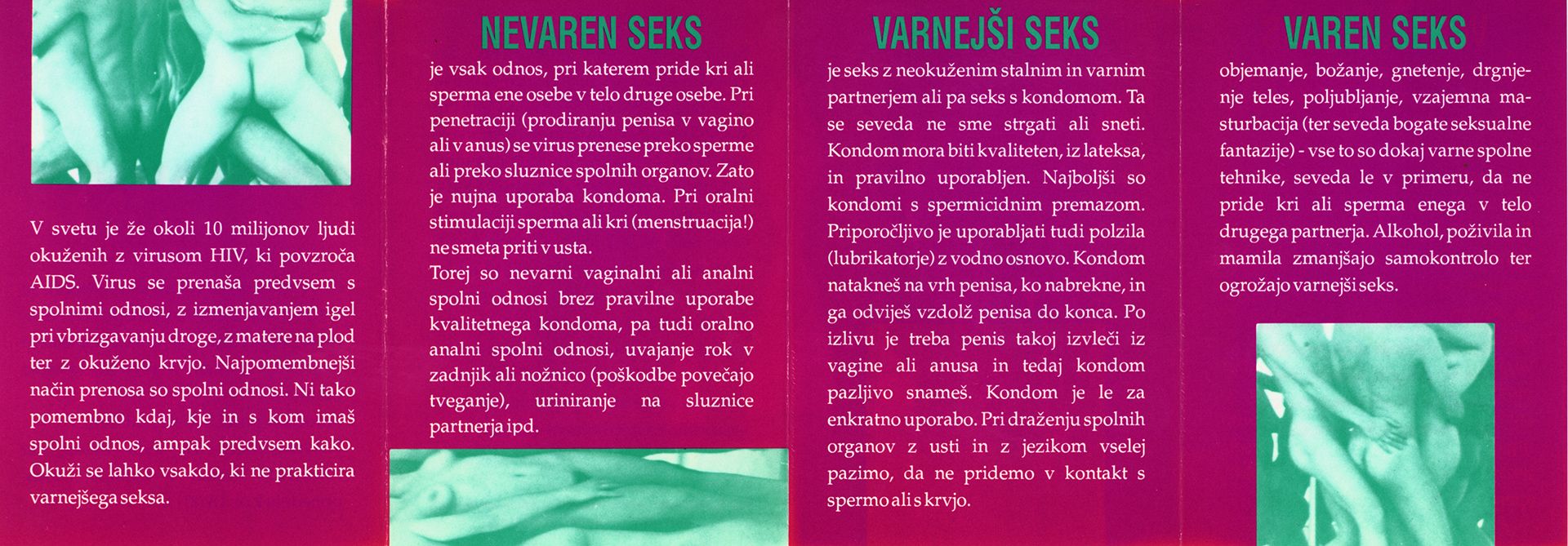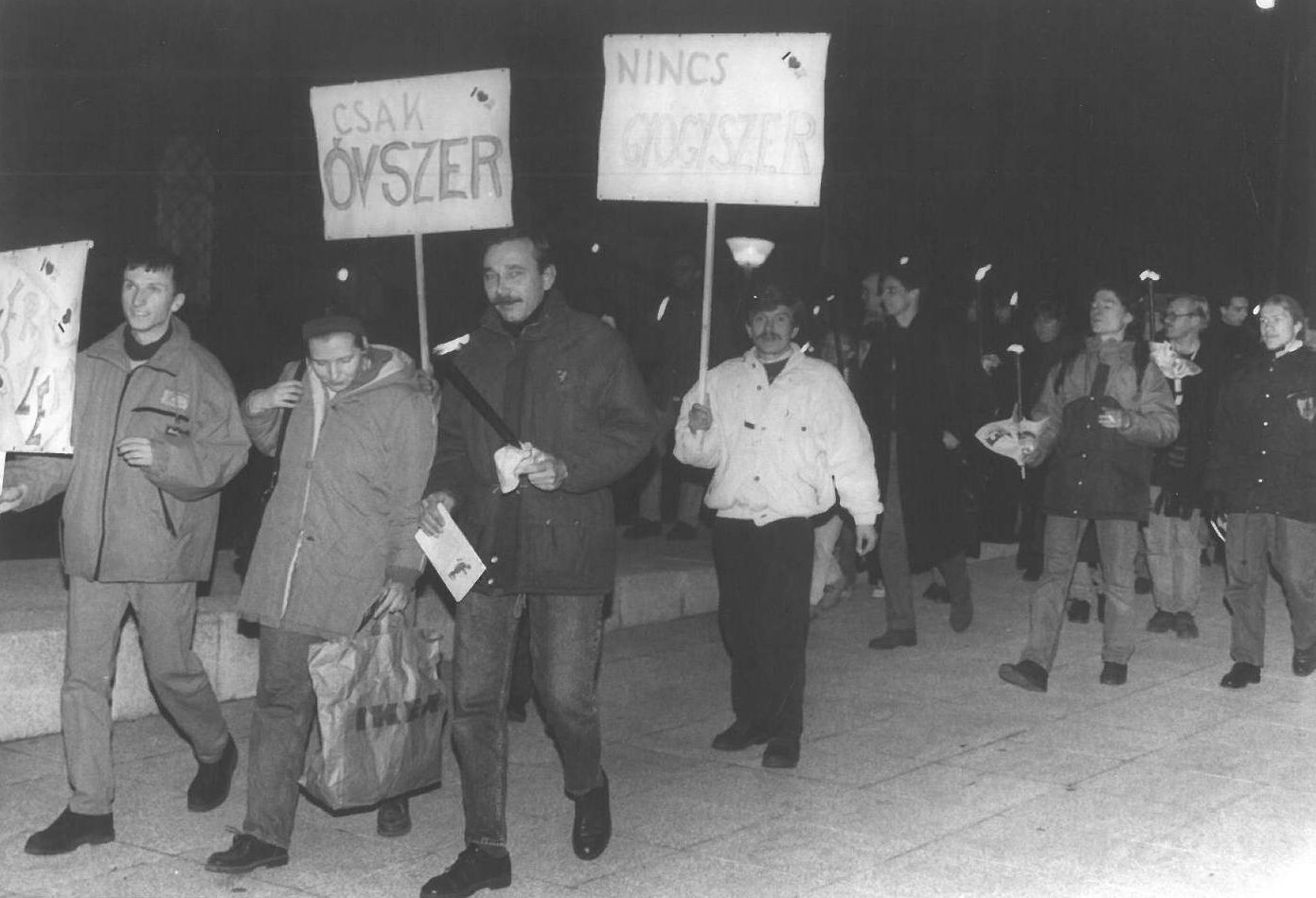The AIDS Pandemic and Homosexual “Self-Organization”
The initial reactions to the HIV pandemic as it spread through the countries of the European Eastern bloc, included a clampdown on news of any observed cases of such disease. In some countries state officials tried to deny even the mere possibility of HIV infection on ideological grounds. As the deputy Minister of Public Health in the USSR, Piotr Burgasov, declared to the magazine “Trud” in 1985: AIDS is a social phenomenon whose origin can be traced to the sexual freedoms on the West, which however are unnatural for Soviet society. By 1984 there were several allegations of AIDS cases in Czechoslovakia, the DDR, Poland, the USSR, and Romania, most of them denied by the authorities. Paradigmatic is the case of two deaths in 1983 in Czechoslovakia which were initially reported to the WHO collaborating Center on AIDS in Paris but later cancelled and removed from their register after pressure from the Czechoslovak authorities.
Aside from this attitude, the start of the pandemic was also a period during which disinformation about the origin of the disease was spread by mainstream media, particularly in the USSR and Bulgaria. In addition, while few professional media were engaged in disseminating scientific findings, mainstream media frequently provided insufficiently verified and ideologically framed information about HIV, replicating also the prejudice against the disease as a “homosexual plague” even after the 1990s.
With the registration of the first AIDS deaths in each of the countries, the authorities increased surveillance and repression of homosexuals in several ways. In Hungary, according to reports made by the HOSI organization, a large number of gays were summoned by the authorities to examinations following allegations that they were in contact with HIV positive people. In Poland through the “Operation Hyacinth”, and with the official pretext of taking care of public health in light of the emerging HIV pandemic, the Ministry of Public Security (Służba Bezpieczeństwa) created one of the largest “pink lists” in the region, ultimately gathering documentation on around 11,000 homosexuals. In the USSR decrees were advanced which ultimately justified forceful examination of people suspected of having AIDS or venereal diseases.
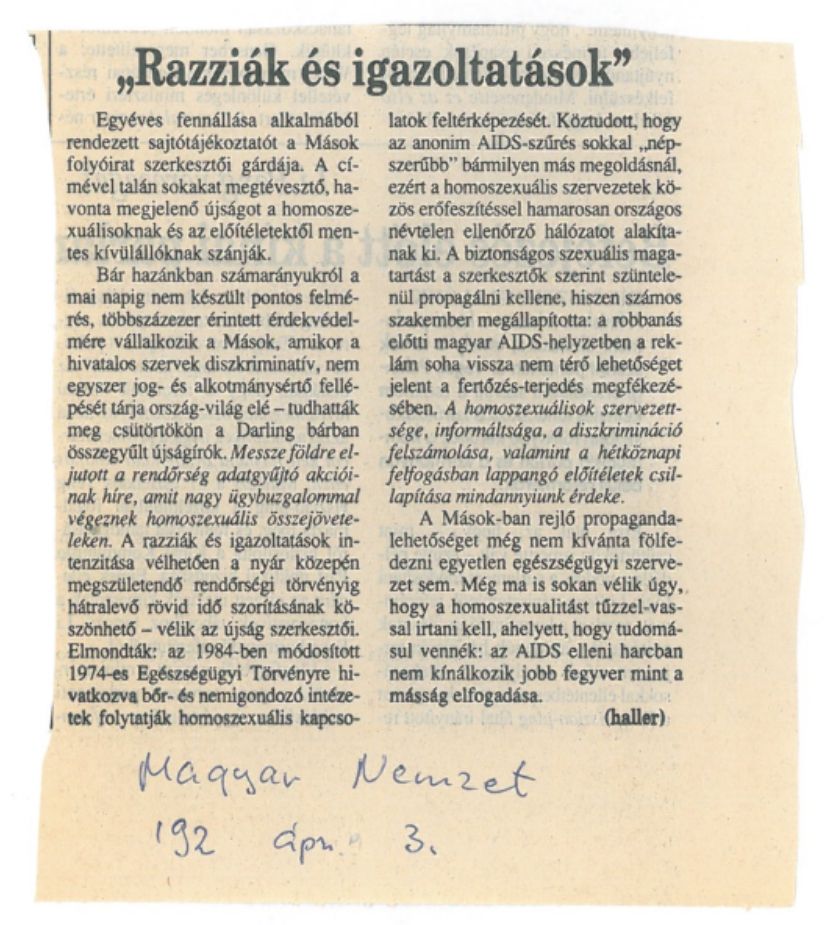
Raids and identity-checks in Hungary, 1992
press clipping from the Hungarian “Magyar Nemzet”, exhibition print
Háttér Archive and Library
The emergence of the HIV pandemic, thus situated the gay and lesbian movement in Central and Southeastern Europe in a peculiar environment, in which it had to cope with two urgent issues. On the one hand, gay and lesbian communities had to start working at grass-roots-level within the community to provide sexual education and protect themselves from the infection. For this they needed a more stable organizational structure and allies among the healthcare and the political authorities, which they lacked in the past. On the other hand, they had to resist the repressive attitude of the state and the stigmatization of homosexuals launched through the public media. This required creative mobilization and strategic action by the gay communities. The public prejudice against the gay community as “closed and secretive”, was used by gay groups to claim – for the same reasons – privileged access to its members. As such gay groups were themselves seen as being among the most competent to do the preventive work within their community, which was an additional reason for the state to recognize them and grant them legal status.
The AIDS pandemic had a different influence on the development of the gay and lesbian movement in different countries, playing a very important role in Central Europe, but a marginal one in Southeastern Europe. Some of the organizations appearing in the late 1980s in Central Europe such as Homérosz in Hungary or the Polish Lambda owed much of the strengthening of their social and political capacities to the mobilization and self-organization that took place during the pandemic.
Interview with Dr. Dénes Bánhegyi and Dr. Lajos Romsauer on newly opened anonymous AIDS screening station, 1988
Video clip from “Híradó”, evening news on the Hungarian Television
Háttér Archive and Library
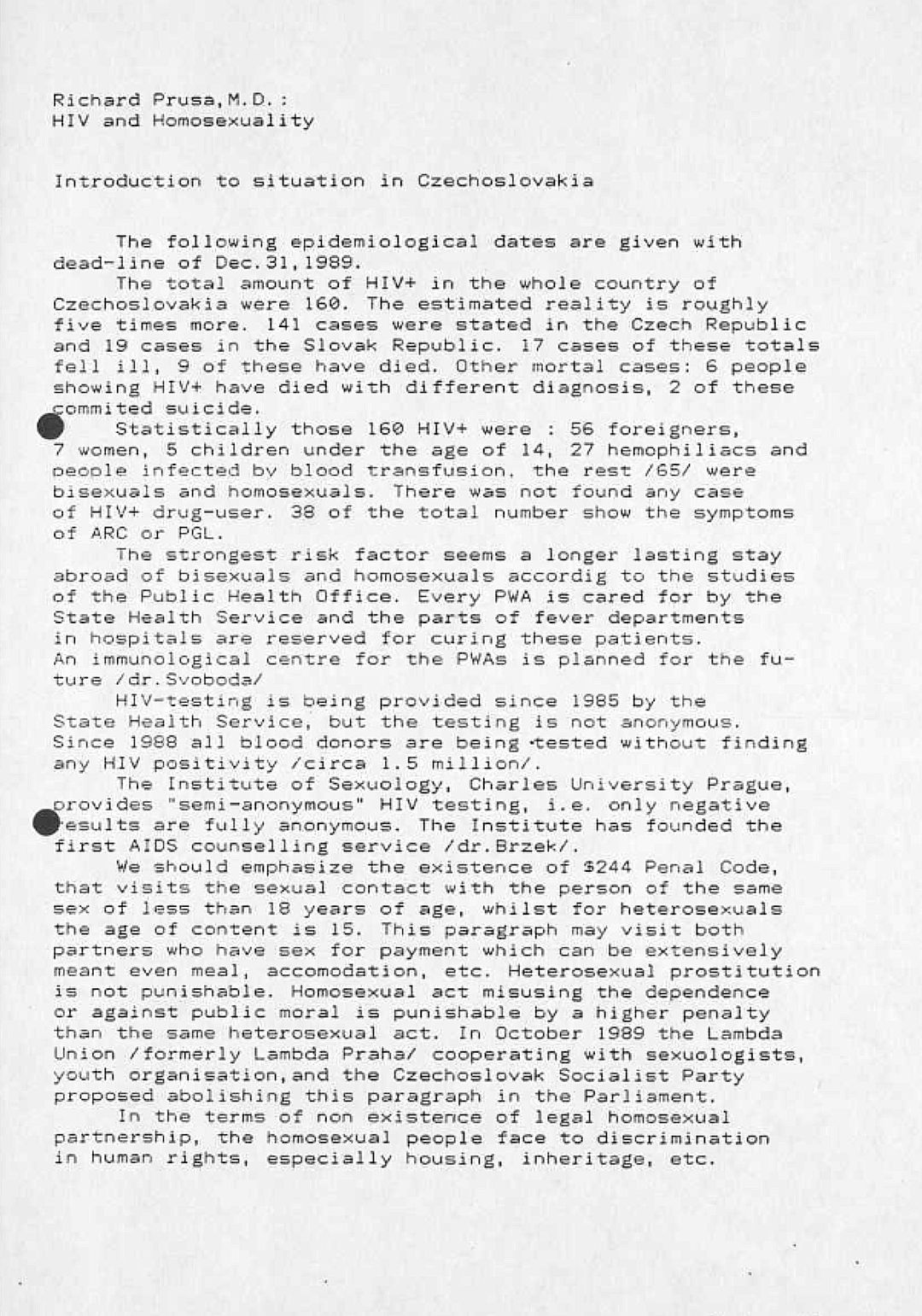
Excerpt from a report by dr. Richard Průša, on the situation with AIDS infections in Czechoslovakia at the end of 1989, 1990
report, exhibition print
IHLIA, Amsterdam
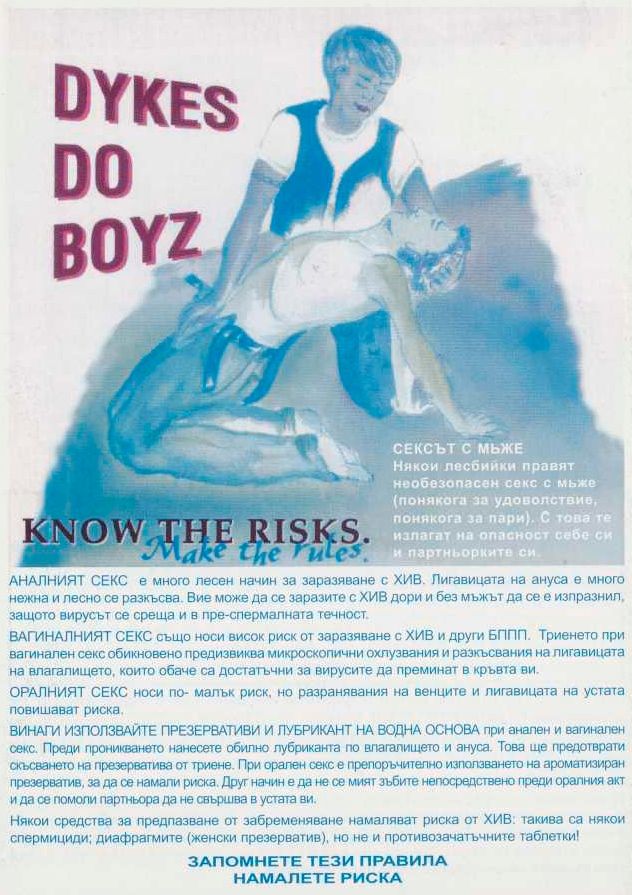
Bulgarian anti-AIDS brochure published by the Gemini organization with support from the “Dandyboys Projects”, Berlin, late 1990s–2002
ephemera, exhibition print
IHLIA, Amsterdam
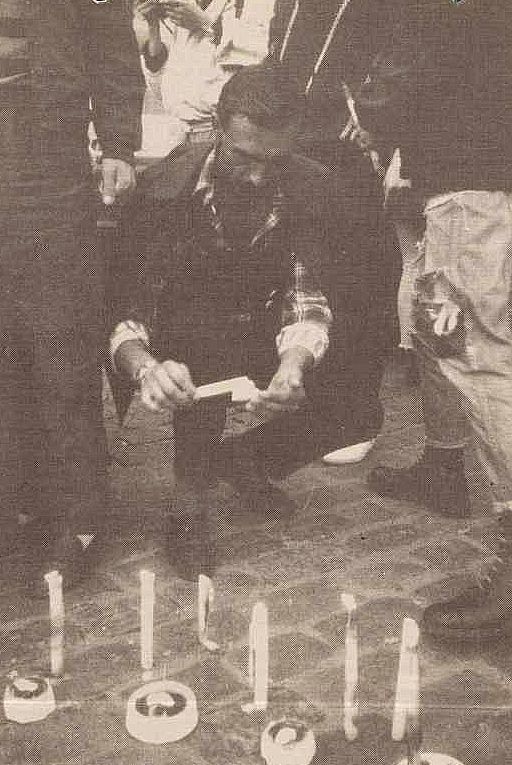
Candlelight vigil in Warsaw, 1990
photo, exhibition print
Blinken OSA


